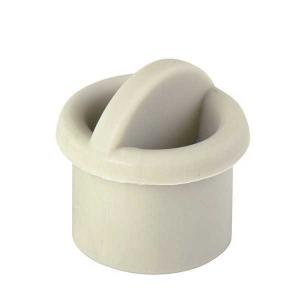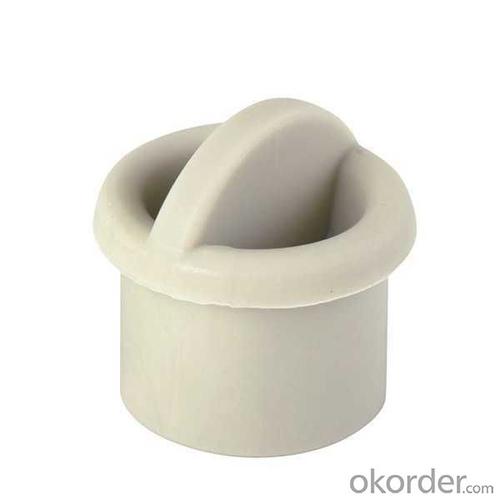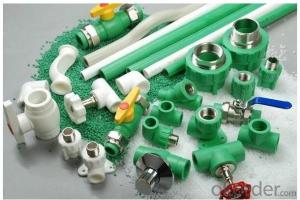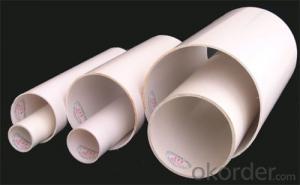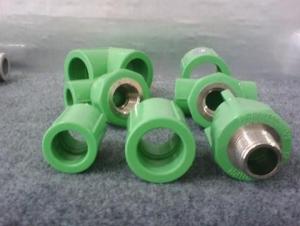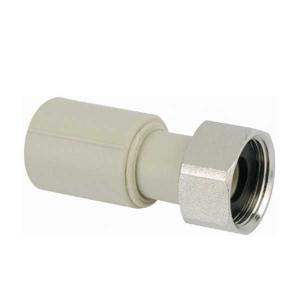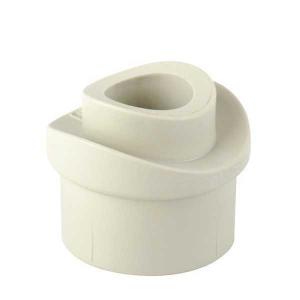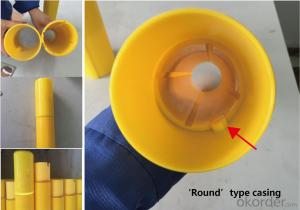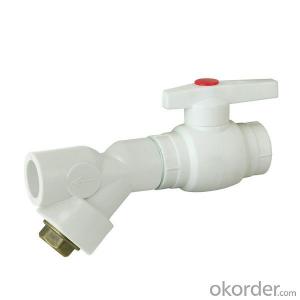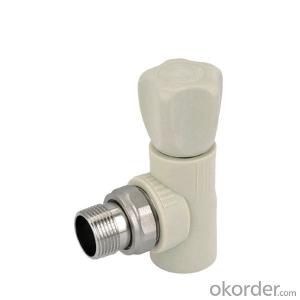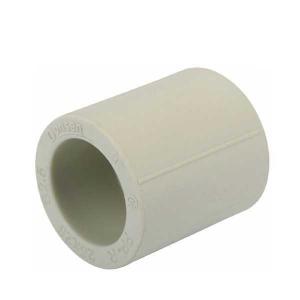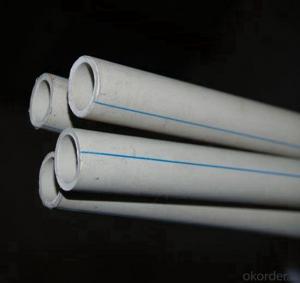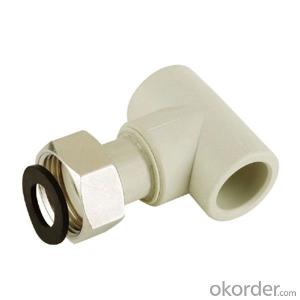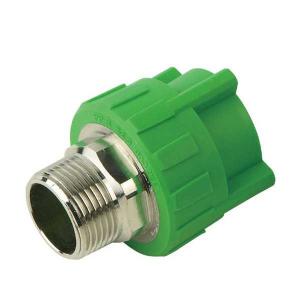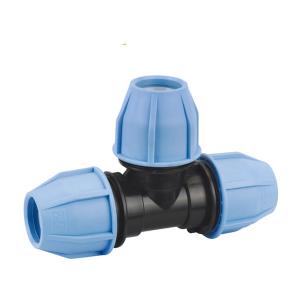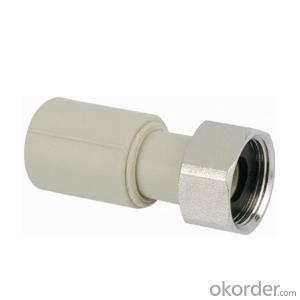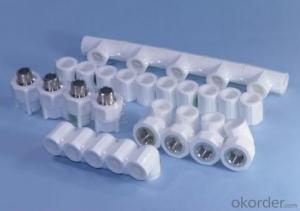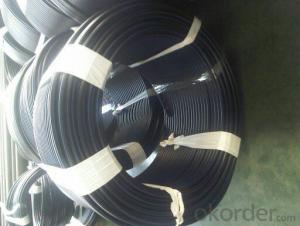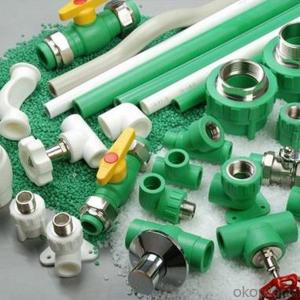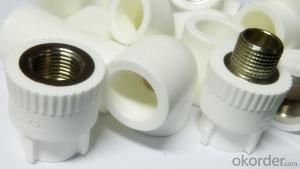High Quality Blingding Internal 3 4 Inch Plastic Pipe Fittings
- Loading Port:
- Ningbo
- Payment Terms:
- TT or LC
- Min Order Qty:
- 1000 watt
- Supply Capability:
- 100000 watt/month
OKorder Service Pledge
Quality Product, Order Online Tracking, Timely Delivery
OKorder Financial Service
Credit Rating, Credit Services, Credit Purchasing
You Might Also Like
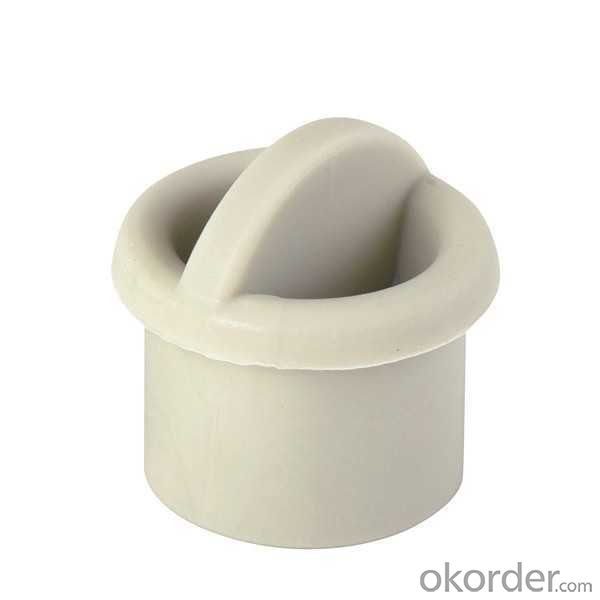 ppr fittings HYOSUNG PPR raw materials standard:DIN8077-8078 GB/T18742.3-2002 PN25 White grey green color
ppr fittings HYOSUNG PPR raw materials standard:DIN8077-8078 GB/T18742.3-2002 PN25 White grey green color
1.Material:Random Polypropylene(Hyosung R200P);
2.ISO9001&ISO14001;
3.Standard:GB/T 18742.3-2002, DIN8077/8078;
4.OEM also ok
- Q: Can plastic pipe fittings be used in fire-retardant systems?
- No, plastic pipe fittings cannot be used in fire-retardant systems as they are not designed to withstand high temperatures and can potentially melt or contribute to the spread of fire. Fire-retardant systems require fittings made from fire-resistant materials such as metal to ensure the safety and effectiveness of the system.
- Q: Are plastic pipe fittings compatible with compression couplings?
- Yes, plastic pipe fittings are compatible with compression couplings. Compression couplings are designed to create a secure and leak-free connection between pipes, and they can be used with various types of materials, including plastic pipe fittings.
- Q: Are plastic pipe fittings resistant to thermal shock?
- Yes, plastic pipe fittings are generally resistant to thermal shock. They can withstand sudden changes in temperature without cracking or breaking, making them a reliable choice for various plumbing and piping applications.
- Q: Are plastic pipe fittings resistant to UV radiation?
- Yes, plastic pipe fittings are generally resistant to UV radiation. Most modern plastic materials used in pipe fittings are designed to withstand extended exposure to sunlight and UV rays without significant degradation or discoloration. However, it is important to note that the level of UV resistance can vary depending on the specific type of plastic used in the fittings.
- Q: How do you remove a plastic pipe fitting?
- To remove a plastic pipe fitting, you typically need to follow these steps: 1. Turn off the water supply: Locate the main water valve and shut it off to prevent any leaks or water flow while removing the fitting. 2. Drain the pipe: Open a faucet or valve downstream from the fitting to drain any water remaining in the pipe. 3. Cut the pipe: Using a pipe cutter or hacksaw, carefully cut the plastic pipe on both sides of the fitting. Be cautious not to damage the adjacent pipe or the fitting itself. 4. Loosen the fittings: Depending on the type of fitting, you may need to use a wrench or pliers to loosen and remove any nuts, clamps, or rings securing the fitting to the pipe. 5. Separate the fitting: Once the nuts/clamps are loose, gently twist and pull the fitting away from the pipe. If it's stubborn, applying heat with a heat gun can help soften the plastic and make it easier to remove. 6. Clean the pipe ends: After removing the fitting, use a utility knife or sandpaper to clean any burrs or debris from the pipe ends before installing a new fitting or reconnecting the existing one.
- Q: Can plastic pipe fittings be used for chemical injection systems?
- Yes, plastic pipe fittings can be used for chemical injection systems. Plastic materials such as PVC, CPVC, and polypropylene are commonly used for their chemical resistance and durability in handling various chemicals. However, it is important to select the appropriate type of plastic pipe fitting that is compatible with the specific chemical being injected to ensure safe and efficient operation of the system.
- Q: Can plastic pipe fittings be used for chemical waste systems?
- No, plastic pipe fittings should not be used for chemical waste systems as they may not be chemically resistant and could lead to leaks or contamination. It is recommended to use fittings specifically designed for chemical waste systems, such as those made from chemically resistant materials like PVC or CPVC.
- Q: How do you connect plastic pipe fittings?
- To connect plastic pipe fittings, you typically need to follow these steps: 1. Ensure that the pipe and fittings are clean and free from any debris or dirt. 2. Apply a suitable solvent cement to both the pipe and fitting surfaces. 3. Insert the pipe into the fitting firmly and make sure it is fully seated. 4. Hold the joint in place for a few seconds to allow the cement to bond and set. 5. Wipe away any excess cement and allow the joint to cure as per the manufacturer's instructions.
- Q: Are plastic pipe fittings resistant to impact?
- Yes, plastic pipe fittings are generally resistant to impact due to their durability and flexibility. They are designed to withstand significant pressure and impact without cracking or breaking, making them a reliable choice for various plumbing and construction applications.
- Q: Are plastic pipe fittings resistant to fungal growth?
- Yes, plastic pipe fittings are generally resistant to fungal growth due to their non-porous nature, which makes it difficult for fungi to thrive and grow on the surface. Additionally, most plastic pipe fittings are manufactured with antimicrobial properties that further inhibit the growth of fungi and other microorganisms.
Send your message to us
High Quality Blingding Internal 3 4 Inch Plastic Pipe Fittings
- Loading Port:
- Ningbo
- Payment Terms:
- TT or LC
- Min Order Qty:
- 1000 watt
- Supply Capability:
- 100000 watt/month
OKorder Service Pledge
Quality Product, Order Online Tracking, Timely Delivery
OKorder Financial Service
Credit Rating, Credit Services, Credit Purchasing
Similar products
Hot products
Hot Searches
Related keywords
